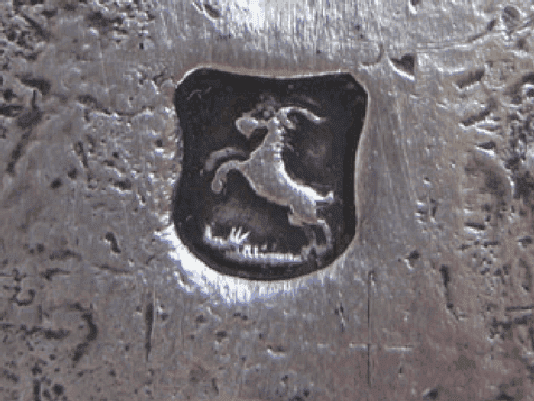Commodity prices including that of silver are constantly in flux but one thing is certain: The cost of bread has been remarkably constant in silver terms over the last 150+ years
The old-time daily “Silver Fix” of the London Metal Exchange is gone. Established in 1897 to facilitate the exchange of metal between buyers and sellers, it had received some bad press in recent years.
Hues of undue manipulations surfaced, rightly or wrongly and the old-time system finally gave way to a new electronic system of matching supply and demand.
Time will tell if the new system is any better or not. If it is sound, the new method will be applied to other commodities as well.
You may wonder though, why is the price of silver so important?
Time will tell if the new system is any better or not. If it is sound, the new method will be applied to other commodities as well.
You may wonder though, why is the price of silver so important?
Use of Silver:
Historically the major silver use was mostly for jewelry and coinage. Artisans like silver smiths created bowls, baskets, chalices, cutlery and numerous other objects from silver.
Historically the major silver use was mostly for jewelry and coinage. Artisans like silver smiths created bowls, baskets, chalices, cutlery and numerous other objects from silver.
In medieval times many guilds were established throughout Europe (including the UK) that controlled standards of craftsmanship and material quality. Most such items were not made from pure metal but an alloy with copper containing 60-80% silver.
They are preserved in museums, sought after by collectors and still are common heirlooms in the western world like the basket pictured below, made from 80% silver in Germany, approximately 100 years ago.
Silver basket with 800 hall-mark, probably early 20th century
In modern times silver has found many industrial uses. The metal and its alloys have a number of unique and desirable properties such as superior electrical conductivity. That is important for electronic devices like your TV or cell phone.
Silver basket with 800 hall-mark, probably early 20th century
In modern times silver has found many industrial uses. The metal and its alloys have a number of unique and desirable properties such as superior electrical conductivity. That is important for electronic devices like your TV or cell phone.
Silver also has the highest optical reflectivity and is the metal behind the glass in your mirrors. During most of the 20th century, a large portion of silver went into photographic films, a use that has declined with modern electronic cameras.
However there are many other industrial uses for this element; even stainless steel solder is silver-based as it readily binds with that material at a relatively low temperature.
Silver amalgam, a mixture of silver and mercury is the most widely used filler for dental cavities. When the components are freshly mixed they form a paste that is easy to work with. It hardens rapidly into hard and durable fillings.
Silver amalgam, a mixture of silver and mercury is the most widely used filler for dental cavities. When the components are freshly mixed they form a paste that is easy to work with. It hardens rapidly into hard and durable fillings.
Dental amalgam has been a major use of silver metal for many decades; some records indicate its use well over a thousand years ago in China. Silver derivatives are also used in medical applications like antiviral eye drops, wound dressings and the like.
Silver Coinage:
Coins made from silver and gold have been are around for well over two thousand years. In ancient Greece, a silver Drachma (containing 1/8 oz. of silver) was the pay for a day of common labor. In Queen Victoria’s time when the daily Silver Fix was established, 2/3 oz. of silver paid for three days of labor, not all that different from old Greece.
Prior to the mid 1900’s or so, many higher value coins were made from a high silver-content alloy as well. For example, common U.S. “silver dollars” were made from metal containing mostly silver until 1935 and up to 40% silver as late as 1974.
Silver Coinage:
Coins made from silver and gold have been are around for well over two thousand years. In ancient Greece, a silver Drachma (containing 1/8 oz. of silver) was the pay for a day of common labor. In Queen Victoria’s time when the daily Silver Fix was established, 2/3 oz. of silver paid for three days of labor, not all that different from old Greece.
Prior to the mid 1900’s or so, many higher value coins were made from a high silver-content alloy as well. For example, common U.S. “silver dollars” were made from metal containing mostly silver until 1935 and up to 40% silver as late as 1974.
Canadian common silver dollars were minted with 80% silver until 1967. Pretty much all of such coins have been collected by people realizing that the metal value now exceeds the coins’ face value. Currently an ounce of (pure) silver goes for about $20, a far cry from the face value of $1 of an old silver dollar.
The Fix:
As you can surmise, the price of silver is of importance for all consumers and users of which there are many. Like other materials produced and consumed in large amounts, the price of the metal is subject to fluctuations on the world market.
The Fix:
As you can surmise, the price of silver is of importance for all consumers and users of which there are many. Like other materials produced and consumed in large amounts, the price of the metal is subject to fluctuations on the world market.
It can rise or fall severely in mere seconds. Any problems with a major mine or other potential supply interruptions are immediately noticed by the markets with consumers or speculators buying ahead of the actual requirement and the price adjusts accordingly, up or down.
Whether you like it or not, commodity prices including that of silver are constantly in flux but one thing is certain: The cost of bread has been remarkably constant in silver terms over the last 150+ years, about one tenths of an ounce for a loaf or roughly the amount of silver in an old dime.
Whether you like it or not, commodity prices including that of silver are constantly in flux but one thing is certain: The cost of bread has been remarkably constant in silver terms over the last 150+ years, about one tenths of an ounce for a loaf or roughly the amount of silver in an old dime.















